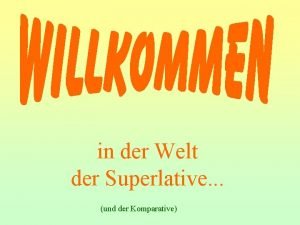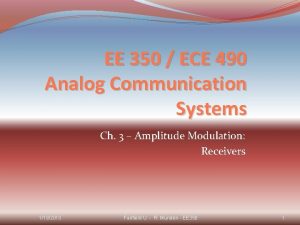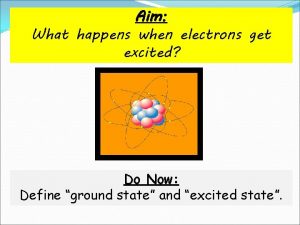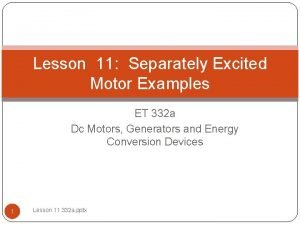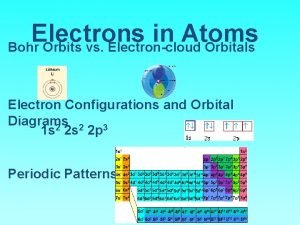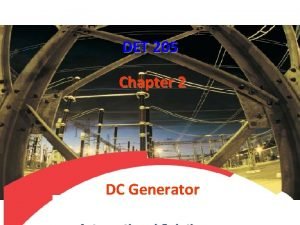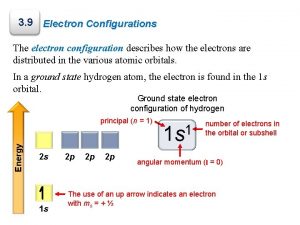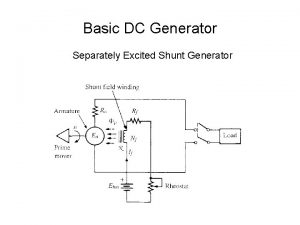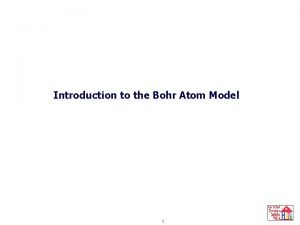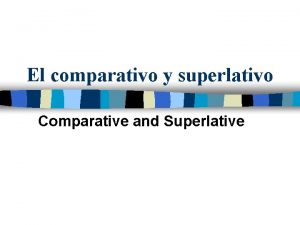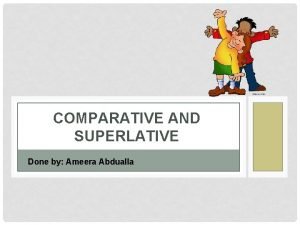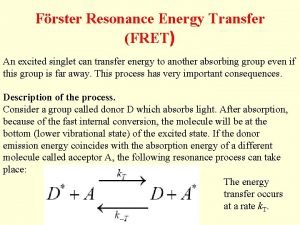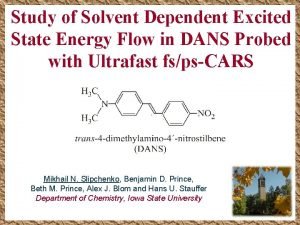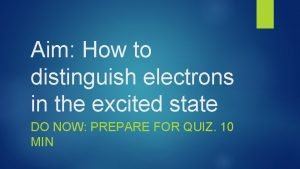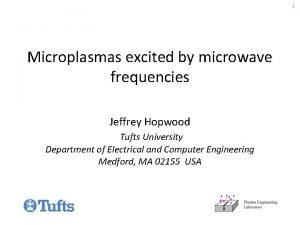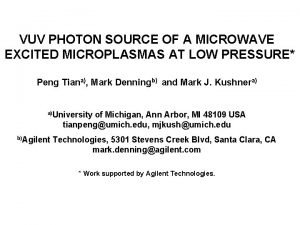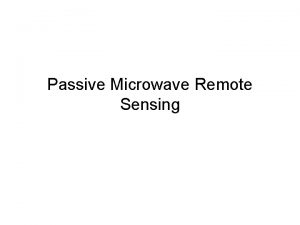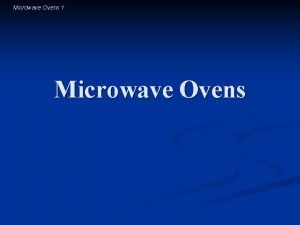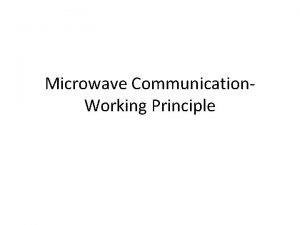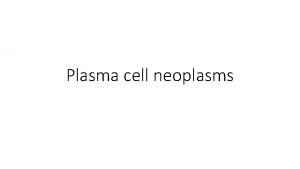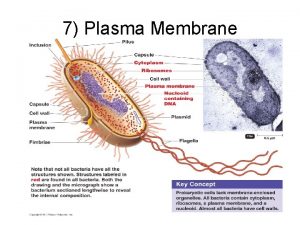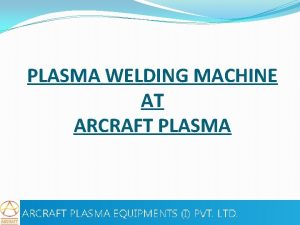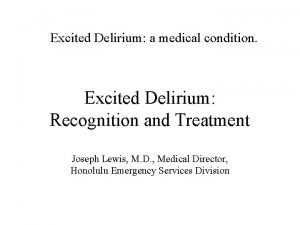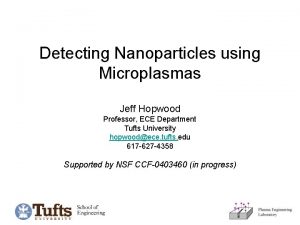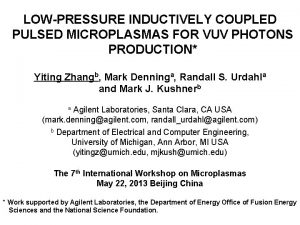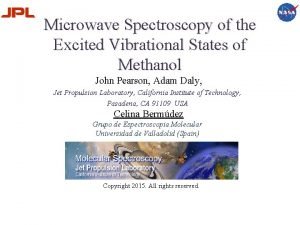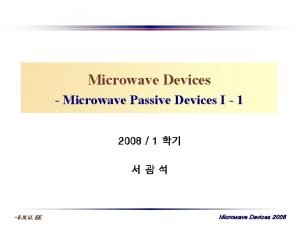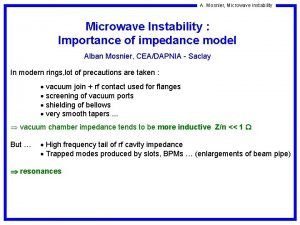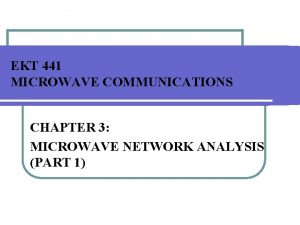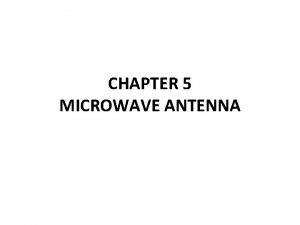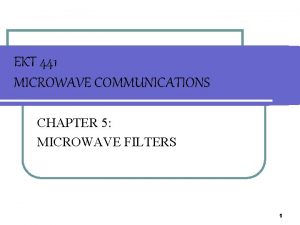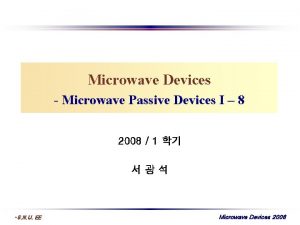PLASMA DYNAMICS OF MICROWAVE EXCITED MICROPLASMAS IN A





























- Slides: 29

PLASMA DYNAMICS OF MICROWAVE EXCITED MICROPLASMAS IN A SUB-MILLIMETER CAVITY* Peng Tiana), Mark Denningb) , Mehrnoosh Vahidpour, Randall Urdhalb) and Mark J. Kushnera) a)University of Michigan, Ann Arbor, MI 48109 USA tianpeng@umich. edu, mjkush@umich. edu b)Agilent Technologies, 5301 Stevens Creek Blvd, Santa Clara, CA mark. denning@agilent. com, randall_urdahl@agilent. com MIPSE 2014, Ann Arbor, MI USA * Work supported by Agilent Technologies.

AGENDA · Microplasma cavities · Description of model · Plasma dynamics in Ar · Pressure · Power · Plasma dynamics in Ne/Xe · Concluding Remarks MIPSE_2014 P. T. University of Michigan Institute for Plasma Science & Engr.

MICROPLASMAS IN CAVITIES · Microplasmas in cavities have a wide range of applications (e. g. ion/photon sources, display panels). · Excitation mechanisms and scaling laws are unclear. [1], [2] Ref: [1] H-J Lee, et al. , J. Phys. D: Appl. Phys. 45 (2012) [2] K. S. Kim, Appl. Phys. Lett. 94 011503 (2009) [3] Endre J. Szili, et al. , Proc. SPIE 8204, Smart Nano-Micro Materials and Devices, 82042 J (December 23, 2011); MIPSE_2014 P. T. [3] University of Michigan Institute for Plasma Science & Engr.

LOW PRESSURE MICROPLASMA CAVITY · Rare gases and rare-gas mixtures with flow rates of 1 -10 sccm through a structure ~ 2 mm wide with power of a few watts. · Confined structure enables operation at a few Torr while exhausting into near vacuum. · Microplasmas are used as VUV photon sources. MIPSE_2014 P. T. University of Michigan Institute for Plasma Science & Engr.

MICROPLASMA GEOMETRY Cavity Orifice Diffusion Region · Microwave capacitively coupled plasma in a long microplasma cavity (side view) · Quartz coated electrodes. · In diffusion region, side walls are covered by dielectric. · Base Condition: · Ar, 4 Torr, 1 sccm · 2. 5 GHz CW power, 2 W. · Cavity width: 2 mm MIPSE_2014 P. T. University of Michigan Institute for Plasma Science & Engr.

HYBRID PLASMA EQUIPMENT MODEL Surface Chemistry Module · The Hybrid Plasma Equipment Model (HPEM) is a modular simulator that combines fluid and kinetic approaches. · Radiation transport is addressed using a spectrally resolved Monte Carlo simulation. MIPSE_2014 P. T. University of Michigan Institute for Plasma Science & Engr.

ATOMIC MODEL FOR AR Ar+ Ar(4 d) Ar(4 p) Ar(1 s 2) Ar(1 s 3) 4) Ar(1 s 5) · Argon Species: · Ar(3 s), Ar(1 s 2, 3, 4, 5), Ar(4 p), Ar(4 d), Ar+, Ar 2+, e · Electron impact excitation and super-elastic collisions between all levels. · Radiation transport for Ar(1 s 2) (106 nm), Ar(1 s 4) (105 nm) and Ar 2* (121 nm). = 105, 106 nm Ar(3 s) MIPSE_2014 P. T. University of Michigan Institute for Plasma Science & Engr.

BASE CASE – e, Te, Ar(1 s 4) · Plasma density reaches 1013 cm-3, resonant state density is twice the plasma density. The plasma expands to cover the electrode, behaves like ‘normal glow’. · High energy, long mean free path electrons escape the bulk plasma in axial direction. · Ar, 4 Torr, 1 sccm, 2 W, 2. 5 GHz. MIPSE_2014 P. T. Min Max University of Michigan Institute for Plasma Science & Engr.

BASE CASE – IONIZATION · Major ionization source is from bulk electrons, with the assistance of ionization by sheath accelerated secondary electrons. · Photo-ionization is considerable lower (3 orders lower than beam ionization) · Ionization is most intense at the two ends of plasma. Min MIPSE_2014 P. T. Max University of Michigan Institute for Plasma Science & Engr.

BASE CASE – POWER, E-FIELD, CHARGE + – – · Power deposition is dominantly at sheath edge. · Electrode covering dielectric charges to produce dc bias. · Ambipolar-like electric field in the axial direction confines plasma. Charging of dielectric beyond the edge of the plasma is nonambipolar drift of electrons. MIPSE_2014 P. T. Min Max University of Michigan Institute for Plasma Science & Engr.

BASE CASE – INITIAL CONDITION · If the electrons are seeded at different position, plasma will start expansion from there. · Expansion will stop when plasma receives enough current from the dielectric to dissipate the power. Plasma will not fill the cavity at low power. Min MIPSE_2014 P. T. Max University of Michigan Institute for Plasma Science & Engr.

POWER – ELECTRON DENSITY · With increased power, plasma expands to the full length of cavity. · Plasma is confined in physical boundaries of cavity with further increase in power. 1 W ~ 12 W. University of Michigan MIPSE_2014 P. T. Min Max Institute for Plasma Science & Engr.

POWER – PHOTON FLUX · Viewing angle for photons gets larger at high as plasma approaches orifice, producing more divergence flux. · Photon power increases and saturates as input power increases, producing a decrease in efficiency. · Photon efficiency from 0. 01 -0. 03 % in Ar. Min MIPSE_2014 P. T. Max University of Michigan Institute for Plasma Science & Engr.

POWER – PHOTON FLUX · Viewing angle for photons gets larger at high as plasma approaches orifice, producing more divergence flux. · Photon power increases and saturates as input power increases, producing a decrease in efficiency. · Photon efficiency from 0. 01 -0. 03 % in Ar. Min MIPSE_2014 P. T. Max University of Michigan Institute for Plasma Science & Engr.

ORIFICE SIZE – ESCAPING PLASMA · By enlarging the orifice, the plasma eventually escapes at high power. Min MIPSE_2014 P. T. Max University of Michigan Institute for Plasma Science & Engr.

ORIFICE SIZE – POWER, E-FIELD · Power deposition is focused at the orifice and edge of electrode once the plasma escapes and forms a plume. Min MIPSE_2014 P. T. Max University of Michigan Institute for Plasma Science & Engr.

ORIFICE SIZE – VUV PHOTON FLUX · VUV photon flux to observation plane increases with increasing orifice size, particularly when plume is formed. · VUV flux is not “useful” because it is highly divergent. · Efficiency increased up to 0. 1 %. Min MIPSE_2014 P. T. Max University of Michigan Institute for Plasma Science & Engr.

PRESSURE – ELECTRON DENSITY · Plasma tends to be more confined at high pressure with fixed power. Current density increases with pressure, like a normal glow. · Ar, 1 W, 2. 5 GHz. 0. 5 – 20 Torr. MIPSE_2014 P. T. Min Max University of Michigan Institute for Plasma Science & Engr.

PRESSURE – IONIZATION · E-beam ionization is less efficient and more uniform at low pressure, due to a longer MFP for higher energy electrons. · E-beam ionization is limited close to the surfaces at high pressure. Min MIPSE_2014 P. T. Max University of Michigan Institute for Plasma Science & Engr.

PRESSURE – PHOTON FLUX · Photon power to observation plane peaks at 5 Torr. · Resonant state is increasingly quenched while flux becomes more collimated · Efficiency is still low from 0. 010. 03 %. Min MIPSE_2014 P. T. Max University of Michigan Institute for Plasma Science & Engr.

Ne/Xe MIXTURE - REACTIONS Reaction Mechanism: (‘M’ is Ne or Xe) E-Impact and Recombination e + M M* + e, · Xenon Species: e + M M+ + 2 e · Xe(1 s 4), Xe(1 s 3), Xe(1 s 2), Xe(2 p 10), Xe(3 d 6), Xe(2 s 5), Xe(3 p), Xe 2*, Xe+, Xe 2+ e + M* M+ + 2 e, e + M+ M* Spontaneous Emission M* M + hv Penning Ionization, Charge exchange Ne* + Xe Ne + Xe+, Ne+ + Xe Ne + Xe+ M* M+ + M Photo-Ionization hv + M M+ + e, hv + M* M+ + e Dimer Reaction M* + M +M M 2* + M, e + M 2* M 2+ + 2 e e + M 2+ M* + M, M 2+ + M M+ + 2 M MIPSE_2014 P. T. · Penning mixture of Ne/Xe, 4 Torr · Neon Species: · Ne(1 s 2 -5), Ne(2 p), Ne 2*, Ne+, Ne 2+, · Photon Species: · 147 nm – Xe(1 s 4) 121 nm – Xe(1 s 2) 173 nm – Xe 2* 74 nm – Ne(1 s 2, 4) 84 nm – Ne 2* University of Michigan Institute for Plasma Science & Engr.

Ne/Xe MIXTURE – ELECTRON DENSITY · Ne/Xe=80/20, 4 Torr, 1 W. · Plasma density is higher and fills cavity with Ne/Xe mixture. Penning reactions are playing an important role in expansion. Min MIPSE_2014 P. T. Max University of Michigan Institute for Plasma Science & Engr.

Ne/Xe MIXTURE – Ne+, Xe+, Ne(1 s 2, 4), Xe(1 s 4) · Xe excited states are 3 orders of magnitude larger than for Ne. · Ne/Xe=80/20, 4 Torr, 1 W, 1 sccm. Min MIPSE_2014 P. T. Max University of Michigan Institute for Plasma Science & Engr.

Ne/Xe MIXTURE – PHOTON FLUX · Photon flux is dominantly due Xe due to its lower resonant energy. Ne emission is over 4 orders lower. · Photon fluxes are more efficiently generated in penning mixture. Efficiency is 5 -10 times that of pure Ar. Min MIPSE_2014 P. T. Max University of Michigan Institute for Plasma Science & Engr.

CONCLUDING REMARKS · A microwave excited micro-cavity microplasma has been computationally investigated. · Pure Ar plasmas operate in a normal-glow like mode, confined in a fraction of cavity volume when power is low. · With increasing power, plasma will expand fill the cavity. When the orifice size is large enough at certain power, plasma will escape and form a plume. · Ar photon output efficiency is typically low, from 0. 01 – 0. 03 %. · Ne/Xe mixtures will increase the plasma density due to Penning reactions. · Ne/Xe VUV output efficiency is 5 – 10 times higher than that of Ar, from 0. 05 – 0. 5 %. MIPSE_2014 P. T. University of Michigan Institute for Plasma Science & Engr.

BACKUP SLIDES

HPEM-EQUATIONS SOLVED · Electron Energy Distributions – Electron Monte Carlo Simulation · Phase dependent electrostatic fields · Phase dependent electromagnetic fields · Electron-electron collisions using particle-mesh algorithm · Phase resolved electron currents computed for wave equation solution. · Captures long-mean-free path and anomalous behavior. · Separate calculations for bulk and beam (secondary electrons)

HPEM-EQUATIONS SOLVED -

PRESSURE – E FIELD · Higher the pressure, more confined the plasma is. MIPSE_2014 P. T. University of Michigan Institute for Plasma Science & Engr.
 Tomorrow is jill's birthday she is excited
Tomorrow is jill's birthday she is excited Excited superlative
Excited superlative Sinusoidally excited linear circuit
Sinusoidally excited linear circuit Excited comparative and superlative
Excited comparative and superlative Excited as a simile
Excited as a simile Self excited mixer
Self excited mixer The most helpful classmates are the ones who
The most helpful classmates are the ones who How does myrtle react to tom's arrival?
How does myrtle react to tom's arrival? Ground state of neon
Ground state of neon Excited to get started
Excited to get started Jenny hated reading class theme
Jenny hated reading class theme Motor speed formula
Motor speed formula What is a theme
What is a theme Excited is which part of speech
Excited is which part of speech Ground state vs excited state
Ground state vs excited state Michael bounced his right leg nervously
Michael bounced his right leg nervously Dc compound motor diagram
Dc compound motor diagram My very excited mother planets
My very excited mother planets How to write the electronic configuration
How to write the electronic configuration Curcatin
Curcatin Self excited mixer
Self excited mixer Atom model
Atom model Jenny puchovier was so excited theme
Jenny puchovier was so excited theme Superlative of serious
Superlative of serious Superlative for peaceful
Superlative for peaceful Energy transfer theory
Energy transfer theory Tictle
Tictle Excited
Excited Good morning class i know that you are all excited
Good morning class i know that you are all excited Show not tell the pizza was delicious
Show not tell the pizza was delicious



